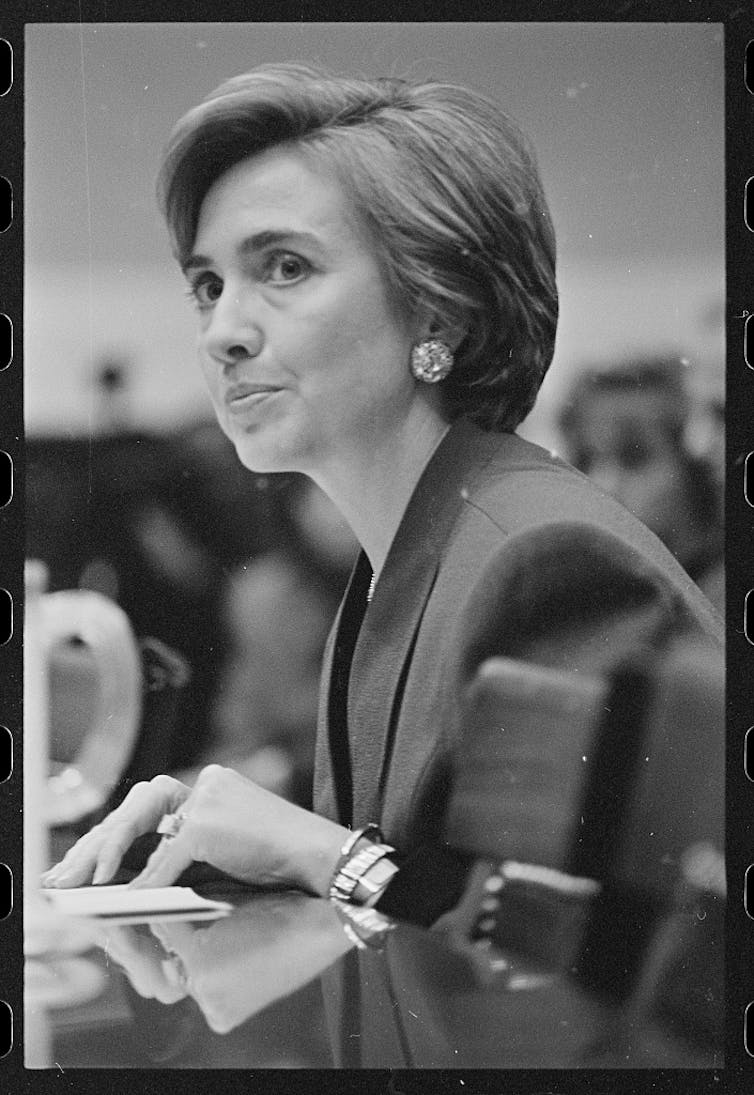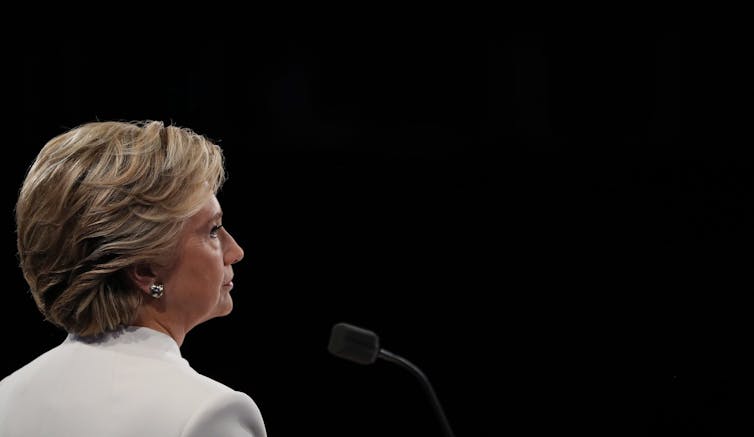Source: The Conversation (Au and NZ) – By Brendon O’Connor, Associate Professor in American Politics at the United States Studies Centre, University of Sydney
Curtis Sittenfeld has a knack of putting her readers in uncomfortable places in her fiction. In her short story Gender Studies she puts you in the middle of a hotel tryst between a Clinton-supporting professor and a Trump-supporting shuttle bus driver. In The Nominee, a journalist vomits on Hillary Rodham Clinton.

In Rodham, Sittenfeld returns to the former First Lady, but with a twist. An imagined memoir, Rodham is propelled by a “what if” thought experiment: what if, in 1975, Hillary left Bill?
It is an alternative reality page turner, and a welcome escapist read in these difficult times.
But how does the book play with the historical record?
Year of the Woman
Sittenfeld’s first turning point in Hillary’s political career is while she watches the 1991 Clarence Thomas Senate confirmation hearings from her colleague’s office at Northwestern University.In both the true and imagined histories — despite clear evidence Thomas had sexually harassed his former employee Anita Hill — a predominantly male Senate confirmed Thomas’s appointment.
The backlash against these widely watched hearings led to 1992 being dubbed the “Year of the Woman” when a record number of women ran and were elected to the US Congress.

In the novel, Hillary runs and defeats Carol Moseley Braun in the Democrat primary. In real life, Braun won this race to become the first ever black female Senator.
The 60 Minutes interview
It is credibly claimed Hillary’s strength in 1992’s infamous 60 Minutes interview saved Bill’s candidacy.
I have watched the real interview with Hillary many times with my students. Questioned about Bill’s alleged affair with Gennifer Flowers, the interview was a watershed moment in the changing attitude of the media towards politicians’ sex lives.
The interview is tough to first watch: why should any couple’s most private affairs be discussed on television like this? What good does it serve?
On re-watching the interview, I am struck by the effective way in which Bill and Hillary talk down the interviewer and control the narrative. Hillary particularly does this with her famous statement:
I’m not sitting here, some little woman standing by my man like Tammy Wynette. I’m sitting here because I love him, and I respect him, and I honour what he’s been through and what we’ve been through together. And you know, if that’s not enough for people, then heck — don’t vote for him.
In Sittenfeld’s imagined interview, Bill’s publicity-shy wife, Sarah Grace, breaks down and cries, effectively ending Bill’s run for presidency.
Sexism in politics
Rodham does an excellent job at detailing the many forms of sexism women face in academia and politics. In the first part of the novel, Professor Rodham is a successful law academic whose male students and colleagues say things they would never say to male academics.
Such double standards are also highlighted by the fictional Hillary once she enters politics as a Senator for Illinois. She laments:
The extra time female politicians were expected to spend on our appearance, known as the pink tax, amounted to an hour a day for me, but I’d learned the hard way that this was necessary. In the past, whenever I didn’t have my hair and makeup professionally done, the media would speculate about whether I was ill or exhausted.

In a delicious plot line, Bill and Hillary end up competing against each other in the 2016 Presidential primaries which leads Hillary to ask: “You know when true equality will be achieved? When a woman with these kinds of skeletons in her closet has the nerve to run for the office.”
Truths and half-truths
The novel draws on the rumours published in Vanity Fair and elsewhere of Bill Clinton’s affairs and involvement in sex parties, as well as discussing the long-standing allegation he raped a female campaign volunteer in the 1970s.
Read more: Weiner’s erotic mediation: Bill Clinton’s sex vs Anthony Weiner’s sexting
In the novel Hillary’s long-time mentor Gwen Greenberger, an African American children’s right advocate, is stand-in for a few significant figures in Hillary’s actual life, including the very impressive Marian Wright Edelman, the founder of the Children’s Defense Fund.
The novel also features James, a stand in character for Hillary Clinton’s friend and fellow partner at the Rose Law Firm in Arkansas, Vince Foster, who died by suicide leading to conspiracy theories against the Clintons.
An appeal to experience

Throughout Rodham, Sittenfeld dissects the question of Hillary’s “likeability” by the press and the American people. In a killer debate response (that I wish she had given in 2016) she says:
[I]f you want someone to look out for the interests of the American people, for your family, for you – someone who understands the economy and education and health care and foreign policy … then vote for me.
In the real election in 2016, too many Americans ignored this appeal to experience and competence and tragically they have ended up with a president that cares little about governing or even the rising death toll of his own people.
The truth has turned out to be more unbelievable than Sittenfeld’s fiction.
– ref. Fiction, fact and Hillary Clinton: an American politics expert reads Rodham – https://theconversation.com/fiction-fact-and-hillary-clinton-an-american-politics-expert-reads-rodham-142478







